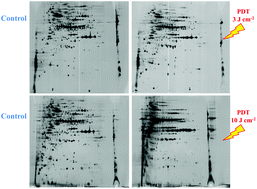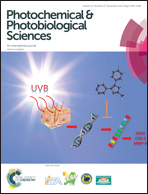The effects of photodynamic treatment with new methylene blue N on the Candida albicans proteome
Abstract
Candida albicans is a human pathogenic fungus mainly affecting immunocompromised patients. Resistance to the commonly used fungicides can lead to poor treatment of mucosal infections which, in turn, can result in life-threatening systemic candidiasis. In this scenario, antimicrobial photodynamic treatment (PDT) has emerged as an effective alternative to treat superficial and localized fungal infections. Microbial death in PDT is a consequence of the oxidation of many cellular biomolecules, including proteins. Here, we report a combination of two-dimensional electrophoresis and tandem mass spectrometry to study the protein damage resulting from treating C. albicans with PDT with new methylene blue N and red light. Two-dimensional gels of treated cells showed an increase in acidic spots in a fluence-dependent manner. Amino acid analysis revealed a decrease in the histidine content after PDT, which is one plausible explanation for the observed acidic shift. However, some protein spots remained unchanged. Protein identification by mass spectrometry revealed that both modified and unmodified proteins could be localized to the cytoplasm, ruling out subcellular location as the only explanation for damage selectivity. Therefore, we hypothesize that protein modification by PDT is a consequence of both photosensitizer binding affinity and the degree of exposure of the photooxidizable residues on the protein surface.

- This article is part of the themed collection: SBQ-RSC: Celebrating UK-Brazil collaborations


 Please wait while we load your content...
Please wait while we load your content...